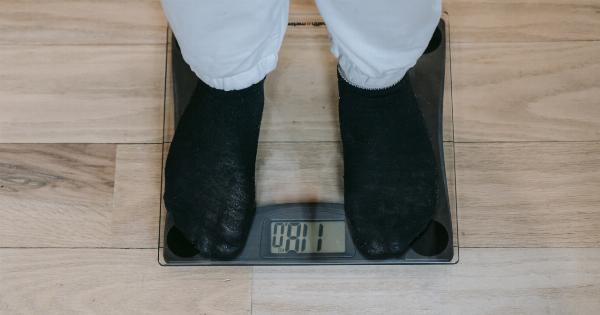Chromatography is an analytical technique used to separate and identify compounds from a mixture.
It is a versatile and powerful tool used in many industries such as pharmaceuticals, biotechnology, food and beverage, environmental testing, forensics, and many others. Chromatography techniques are based on the principle of differential adsorption or partitioning of molecules in a mobile phase and a stationary phase.
This article discusses the importance of chromatography in various fields and its different types and applications.
Types of Chromatography
1. Liquid Chromatography (LC)
Liquid chromatography is the most commonly used chromatography technique and is used to separate compounds based on their polarity or size.
There are different types of liquid chromatography, such as high-performance liquid chromatography (HPLC), reversed-phase chromatography, normal-phase chromatography, ion-exchange chromatography, and size-exclusion chromatography. HPLC is the most widely used technique, and it is used for the separation and analysis of small organic and inorganic compounds, biological molecules, and pharmaceuticals.
2. Gas Chromatography (GC)
Gas chromatography is used for the separation and analysis of volatile and semi-volatile compounds. It is based on the principle of differential partitioning of molecules between a stationary phase and a mobile phase.
The stationary phase is a solid or a liquid, and the mobile phase is a gas. GC is used in various applications such as environmental testing, food and beverage analysis, forensic analysis, and pharmaceutical analysis.
3. Thin-Layer Chromatography (TLC)
Thin-layer chromatography is a simple and inexpensive chromatography technique used for the separation and identification of small organic molecules, drugs, and natural products.
It is based on the principle of differential partitioning of molecules between a mobile phase and a stationary phase. The stationary phase is a thin layer of adsorbent material coated on a glass or plastic plate, and the mobile phase is a liquid solvent. TLC is widely used in research, quality control, and forensic analysis.
Applications of Chromatography
1. Pharmaceutical Industry
Chromatography is widely used in the pharmaceutical industry for the separation, purification, and analysis of drugs and pharmaceuticals.
HPLC is the most commonly used chromatography technique for the analysis of small organic molecules, proteins, and peptides. GC is used for the analysis of volatile compounds, and TLC is used for the analysis of natural products and impurities in drugs.
2. Food and Beverage Industry
Chromatography is used in the food and beverage industry for the analysis of food additives, flavors, colors, and preservatives. HPLC is used for the analysis of amino acids, organic acids, vitamins, and carbohydrates.
GC is used for the analysis of fatty acids, flavor compounds, and volatile compounds.
3. Environmental Testing
Chromatography is used in environmental testing for the analysis of pollutants, pesticides, and other contaminants. GC and HPLC are widely used for the analysis of organic compounds in soil, water, and air samples.
TLC is used for the identification of organochlorine pesticides and PCBs.
4. Forensic Analysis
Chromatography is used in forensic analysis for the separation and analysis of drugs, toxic compounds, and explosives. GC is used for the analysis of volatile compounds and drugs of abuse.
HPLC is used for the identification and quantification of drugs and their metabolites. TLC is used for the identification of drugs and poisons.
Importance of Chromatography
1. Separation and Purification
Chromatography is an important technique for the separation and purification of compounds from a mixture. It is used in many industries such as pharmaceuticals, biotechnology, and food and beverage.
Chromatography can separate compounds based on their polarity, size, charge, or affinity, and can purify compounds to a high degree of purity.
2. Identification and Quantification
Chromatography is used for the identification and quantification of compounds in a mixture. It is based on the principle of differential retention of compounds in a stationary phase and a mobile phase.
Compounds can be identified by their retention time, peak shape, and spectral properties. Chromatography can also be used for the quantification of compounds by comparison with a standard.
3. Quality Control
Chromatography is used in quality control for the analysis of raw materials, intermediates, and finished products. It is used to ensure that the products meet the specifications and quality standards.
Chromatography can detect impurities, degradation products, and contaminants that can affect the safety and efficacy of the product.
4. Research and Development
Chromatography is an important tool in research and development for the isolation, purification, and characterization of compounds. It is used to identify new compounds, study their properties, and develop new drugs and materials.
Chromatography can also be used for the analysis of biological samples, such as proteins, peptides, and nucleic acids.
Conclusion
Chromatography is a versatile and powerful technique used in many industries for the separation, purification, and analysis of compounds.
There are different types of chromatography, such as liquid chromatography, gas chromatography, and thin-layer chromatography, each with its own advantages and applications. Chromatography is important for the identification, quantification, and quality control of products, as well as for research and development.
With the increasing demand for better and safer products, chromatography will continue to be an important tool for the analysis and characterization of compounds.































